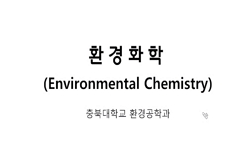<P>Nitrogen-doped porous carbon materials have been highlighted as promising alternatives to high-cost platinum in various electrochemical energy applications. However, protocols to generate effective pore structure are still challenging, which ...
http://chineseinput.net/에서 pinyin(병음)방식으로 중국어를 변환할 수 있습니다.
변환된 중국어를 복사하여 사용하시면 됩니다.
- 中文 을 입력하시려면 zhongwen을 입력하시고 space를누르시면됩니다.
- 北京 을 입력하시려면 beijing을 입력하시고 space를 누르시면 됩니다.


Coffee Waste-Derived Hierarchical Porous Carbon as a Highly Active and Durable Electrocatalyst for Electrochemical Energy Applications
한글로보기https://www.riss.kr/link?id=A107738061
- 저자
- 발행기관
- 학술지명
- 권호사항
-
발행연도
2017
-
작성언어
-
- 주제어
-
등재정보
SCOPUS,SCIE
-
자료형태
학술저널
-
수록면
41303-41313(11쪽)
- 제공처
-
0
상세조회 -
0
다운로드
부가정보
다국어 초록 (Multilingual Abstract)
<P>Nitrogen-doped porous carbon materials have been highlighted as promising alternatives to high-cost platinum in various electrochemical energy applications. However, protocols to generate effective pore structure are still challenging, which hampers mass production and utilization of carbon materials. Here, we suggest a facile and effective method for hierarchical porous carbon by a single-step carbonization of coffee waste (CW) with ZnCl2. The CW, which is one of the most earth-abundant organic waste, can be successfully converted to nitrogen-doped porous carbon. It shows outstanding oxygen reduction activity and durability comparable to the state-of-the-art platinum, and the half-wave potential is also comparable to the best metal-free electrocatalysts in alkaline media. Finally, we apply it to counter electrode of dye-sensitized solar cell, whose photovoltaic efficiency surpasses the one made with conventional platinum electrode. We demonstrate the feasibility of our strategies for highly efficient, cheap, and environment-friendly electrocatalyst to replace platinum in various electrochemical energy applications.</P>
동일학술지(권/호) 다른 논문
-
- American Chemical Society
- Gwon, Taehong
- 2017
- SCOPUS,SCIE
-
- American Chemical Society
- Son, Seung Bae
- 2017
- SCOPUS,SCIE
-
Reaction Mechanism of Area-Selective Atomic Layer Deposition for Al2O3 Nanopatterns
- American Chemical Society
- Seo, Seunggi
- 2017
- SCOPUS,SCIE
-
- American Chemical Society
- Heo, Jin Hyuck
- 2017
- SCOPUS,SCIE




 ScienceON
ScienceON


